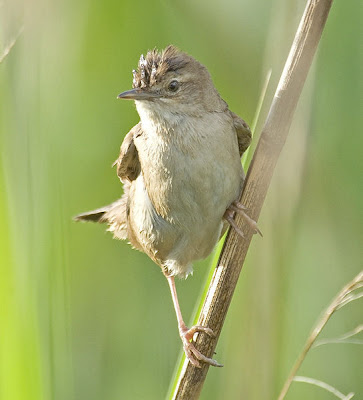There are a number of Passeriformes (perching birds) called "warblers". They are not particularly closely related, but share some characteristics, such as being fairly small, vocal and insectivorous. They are mostly brownish or dull greenish in color. They tend to be more easily heard than seen. Identification can be difficult and may be made on the basis of song alone. To English-speaking Europeans
The grass-warblers are small passerine birds belonging to the genus Locustella. Formerly placed in the paraphyletic "Old World warbler" assemblage, they are now considered the northernmost representatives of a largely Gondwanan family, the Megaluridae. These are rather drab brownish "warblers" usually associated with fairly open grassland, shrubs or marshes. Some are streaked, others plain, all are difficult to view. They are insectivorous. The most characteristic feature of this group is that the song of several species is a mechanical insect-like reeling which gives rise to the group's scientific name. Species breeding in temperate regions are strongly migratory.
The "Old World Warblers", family Sylviidae are a family of small passerine bird species; the names sylviid warblers or true warblers may be more appropriate. The Sylviidae mainly occur as breeding species, as the name implies, in Europe, Asia and, to a lesser extent Africa. However, most birds of temperate regions are strongly migratory, and winter in the latter continent or tropical Asia. Many are accomplished songbirds, though perhaps not as much as other warblers or some thrushes.





No comments:
Post a Comment